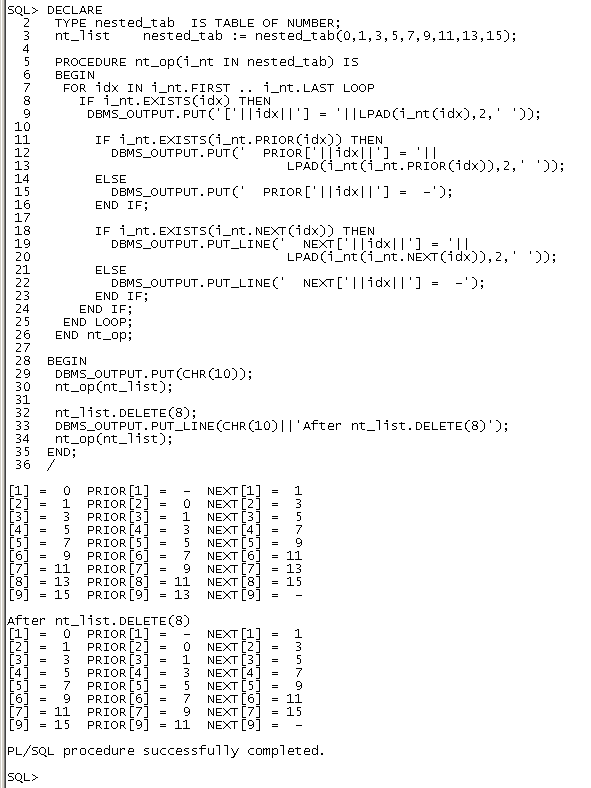TYPE nested_tab IS TABLE OF NUMBER;
nt_list nested_tab := nested_tab(0,1,3,5,7,9,11,13,15);
PROCEDURE nt_op(i_nt IN nested_tab) IS
BEGIN
FOR idx IN i_nt.FIRST .. i_nt.LAST LOOP
IF i_nt.EXISTS(idx) THEN
DBMS_OUTPUT.PUT('['||idx||'] = '||LPAD(i_nt(idx),2,' '));
IF i_nt.EXISTS(i_nt.PRIOR(idx)) THEN
DBMS_OUTPUT.PUT(' PRIOR['||idx||'] = '|| LPAD(i_nt(i_nt.PRIOR(idx)),2,' '));
ELSE
DBMS_OUTPUT.PUT(' PRIOR['||idx||'] = -');
END IF;
IF i_nt.EXISTS(i_nt.NEXT(idx)) THEN
DBMS_OUTPUT.PUT_LINE(' NEXT['||idx||'] = '|| LPAD(i_nt(i_nt.NEXT(idx)),2,' '));
ELSE
DBMS_OUTPUT.PUT_LINE(' NEXT['||idx||'] = -');
END IF;
END IF;
END LOOP;
END nt_op;
BEGIN
DBMS_OUTPUT.PUT(CHR(10));
nt_op(nt_list);
nt_list.DELETE(8);
DBMS_OUTPUT.PUT_LINE(CHR(10)||'After nt_list.DELETE(8)');
nt_op(nt_list);
END;
/
